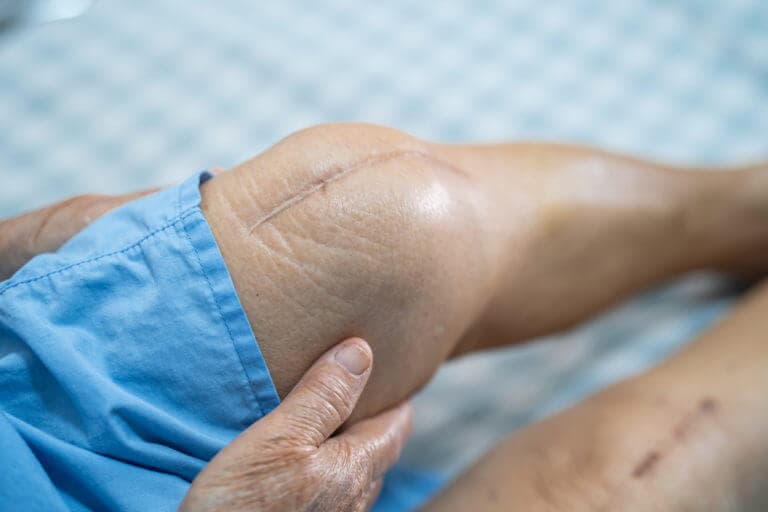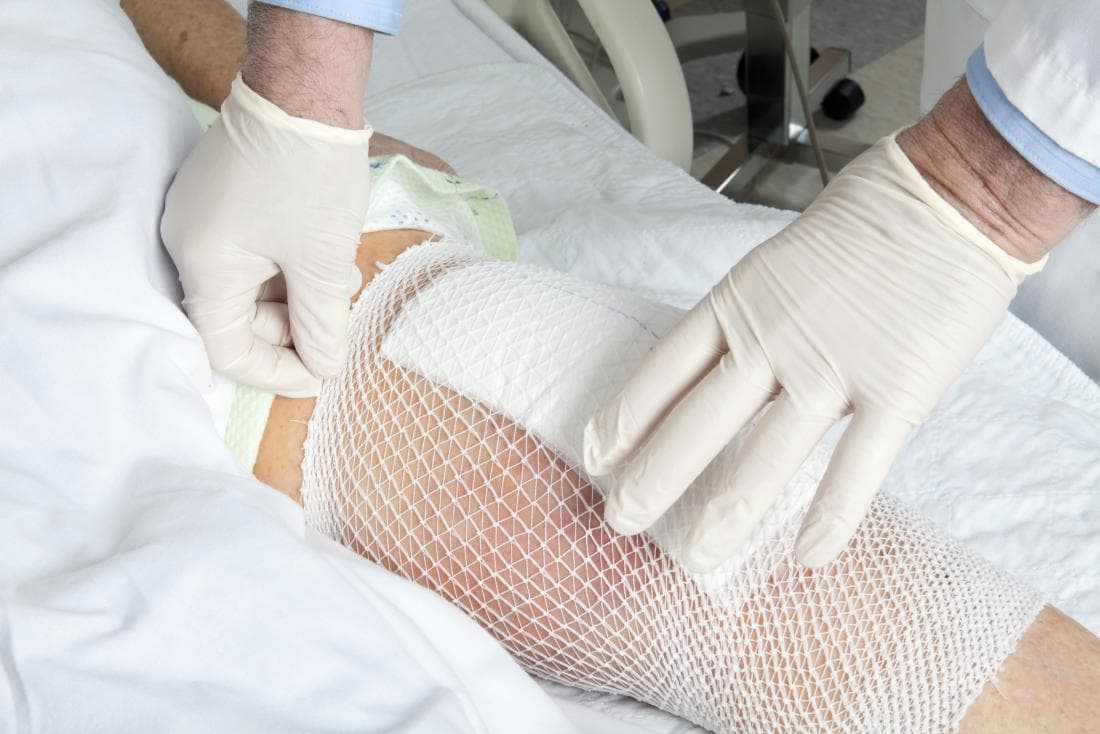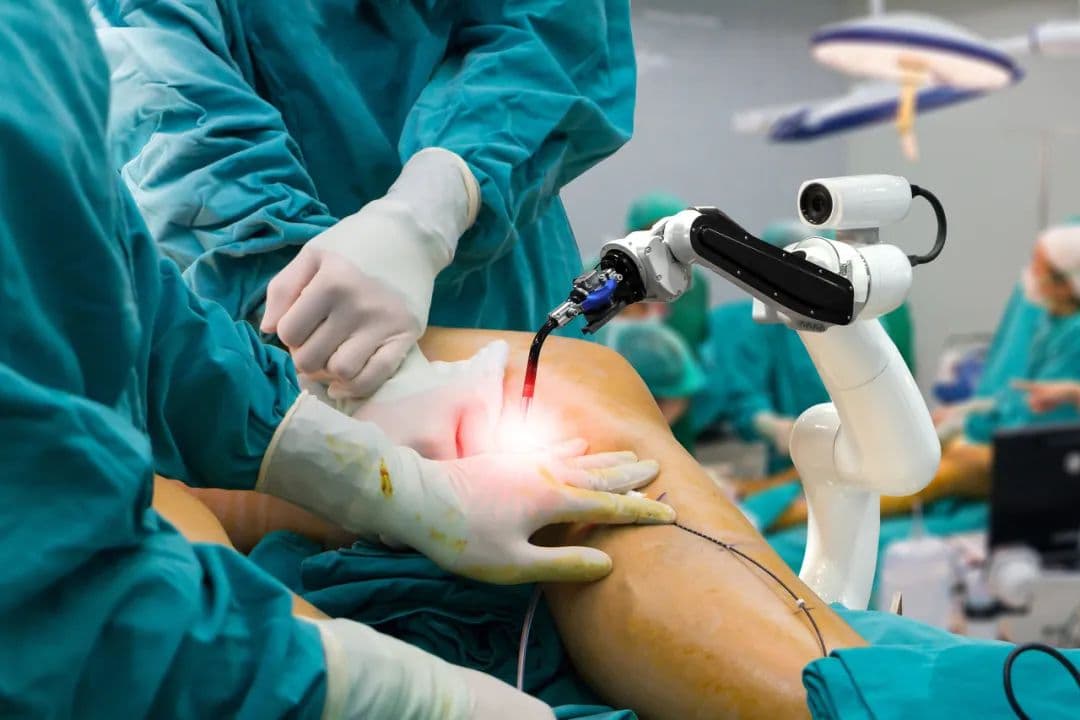Robotic and traditional knee replacement surgeries are both effective methods for treating severe knee arthritis and other knee conditions, but they differ significantly in their approach and technology.
Robotic vs. Traditional Knee Replacement
Robotic and traditional knee replacement surgeries both aim to relieve pain and restore function for patients with severe knee conditions, but they utilize different approaches and technologies. Traditional knee replacement, also known as manual knee replacement, relies on the surgeon's skill and experience to remove damaged tissue and align the prosthetic components. In contrast, robotic knee replacement leverages advanced technology, including 3D imaging and robotic-assisted tools, to enhance precision. Both methods have their advantages and potential drawbacks, with the choice often depending on the patient's specific condition, the surgeon's expertise, and the technology available.
What is total knee replacement surgery?
Total knee replacement surgery, also known as total knee arthroplasty, is a common and highly effective surgical procedure aimed at relieving pain and restoring function in patients with severe knee arthritis or other debilitating knee conditions. This surgery involves replacing the damaged surfaces of the knee joint with artificial components, known as prostheses, to create a smooth, pain-free joint movement.
The procedure begins with the patient under general or spinal anesthesia to ensure comfort and pain control. The surgeon then makes an incision along the front of the knee to access the joint. The damaged bone and cartilage from the femur (thighbone), tibia (shinbone), and patella (kneecap) are carefully removed. Precision is crucial here to ensure that only the damaged areas are taken out while preserving as much healthy bone and tissue as possible.
Once the damaged parts are removed, the surgeon prepares the remaining bone surfaces to fit the prosthetic components. These components typically consist of metal and high-grade plastic. The femoral component is fitted onto the end of the femur, and the tibial component is attached to the top of the tibia. A plastic spacer is placed between these metal components to facilitate smooth movement. In some cases, the patellar surface may also be resurfaced with a plastic component.
The alignment and positioning of these components are critical to the success of the surgery. Proper alignment ensures that the knee moves naturally and reduces the wear on the prosthesis. Advanced techniques, such as robotic-assisted surgery, can enhance the precision of this process, potentially improving outcomes.
After the prostheses are securely in place, the surgeon closes the incision with sutures or staples and applies a sterile dressing. A drain may be placed to remove any excess fluid that accumulates around the joint post-surgery.
Recovery from total knee replacement surgery involves a combination of hospital stay and outpatient rehabilitation. Patients typically stay in the hospital for a few days to manage pain and begin physical therapy. Early movement is encouraged to prevent complications like blood clots and to begin the process of regaining knee function. Physical therapy continues for several weeks to months, focusing on strengthening the muscles around the knee and improving the range of motion.

The disadvantages of traditional knee replacement
Traditional knee replacement surgery, while highly effective in alleviating pain and restoring function for many patients, does have several disadvantages.
One of the primary drawbacks is the reliance on the surgeon’s expertise and experience for accurate alignment and placement of the prosthetic components. This manual approach can sometimes lead to variability in outcomes, with some patients experiencing less optimal alignment, which can affect the longevity and function of the knee implant.
Another significant disadvantage of traditional knee replacement is the greater likelihood of postoperative complications compared to more advanced techniques. These complications can include infection, blood clots, and issues related to the healing of the surgical wound.
Additionally, because traditional methods involve extensive use of manual tools and techniques, there is a higher chance of causing trauma to the surrounding tissues. This increased trauma can result in longer recovery times and more postoperative pain for the patient.
Traditional knee replacement surgeries also typically involve a longer hospital stay and rehabilitation period. Patients often spend several days in the hospital following the procedure and require extensive physical therapy to regain strength and mobility in the knee. The recovery process can be slow and challenging, sometimes taking several months before the patient can resume normal activities.
Another limitation is the potential for less precise fit and alignment of the prosthetic components, which can impact the overall success of the surgery. Inaccurate alignment can lead to uneven wear and tear on the implant, potentially causing it to fail prematurely. This may necessitate revision surgery, which can be more complex and carry additional risks.
Moreover, traditional knee replacement does not incorporate advanced imaging and computer-assisted techniques that are available with newer methods such as robotic-assisted surgery. These advanced techniques can provide more detailed and precise mapping of the patient’s knee anatomy, allowing for better customization and placement of the prosthetic components.
Lastly, traditional knee replacement may not be suitable for all patients, particularly those with unique anatomical challenges or severe deformities. In such cases, the precision and customization offered by robotic-assisted surgery can be more advantageous.

What is Robotic Knee Replacement?
Robotic knee replacement is an advanced surgical technique designed to improve the precision and outcomes of traditional knee replacement surgery. This innovative procedure utilizes robotic-assisted technology to help surgeons plan and perform the surgery with greater accuracy. The process begins with a detailed preoperative assessment, including 3D imaging and computerized tomography (CT) scans, to create a precise model of the patient's knee. This allows the surgeon to develop a highly customized surgical plan tailored to the individual's unique anatomy.
During the surgery, the robotic system assists the surgeon by providing real-time feedback and guidance. The robotic arm, controlled by the surgeon, ensures that the bone cuts are made with unparalleled precision, which is crucial for the accurate placement of the prosthetic components. This high level of accuracy helps in achieving optimal alignment and balance of the knee joint, which can lead to better long-term outcomes, such as improved function and longevity of the implant.
One of the significant advantages of robotic knee replacement is the reduction in trauma to the surrounding soft tissues. The precise nature of the robotic-assisted tools allows for minimally invasive incisions, which can result in less postoperative pain, reduced blood loss, and quicker recovery times. Patients often experience a faster return to normal activities and a shorter rehabilitation period compared to traditional knee replacement surgery.
Robotic knee replacement also offers enhanced customization. The robotic system can make real-time adjustments during the surgery based on the patient's anatomy and any changes observed during the procedure. This adaptability helps in addressing any unexpected challenges and ensures that the prosthetic components fit perfectly, reducing the risk of complications such as implant misalignment or early wear.
Despite its many advantages, robotic knee replacement does require specialized training and equipment, which may not be available in all medical facilities. Additionally, the cost of the procedure can be higher than traditional methods due to the advanced technology involved. However, for many patients, the potential benefits in terms of precision, recovery, and long-term success make robotic knee replacement an attractive option.

The disadvantages of Robotic Knee Replacement
Robotic knee replacement, while an advanced and precise surgical technique, does have its own set of disadvantages.
One of the primary drawbacks is the high cost associated with the procedure. The specialized robotic equipment and technology required are expensive, and this increased cost can be a significant burden for patients and healthcare providers alike. Insurance coverage may vary, and not all patients may have access to this advanced option due to financial constraints.
Another disadvantage is the availability of the technology. Robotic knee replacement requires state-of-the-art equipment and highly trained surgeons. Not all hospitals and medical centers have the necessary resources to offer this procedure, limiting its accessibility. Patients living in rural or underserved areas may have to travel significant distances to find a facility that can perform robotic knee replacement, which can be inconvenient and stressful.
The learning curve associated with robotic-assisted surgery is another concern. Surgeons need specialized training and experience to operate the robotic systems effectively. This can mean that outcomes might vary depending on the surgeon's proficiency with the technology. In some cases, surgeons new to robotic-assisted techniques might initially face challenges that could impact the consistency and quality of results.
Although robotic knee replacement is designed to enhance precision, there is always a risk of technical malfunctions or errors. The reliance on sophisticated technology means that any system failure or glitch can potentially compromise the surgery. Such incidents, while rare, can lead to delays or complications, which may affect patient outcomes and overall satisfaction with the procedure.
Patients undergoing robotic knee replacement may also face a longer preoperative preparation time. The detailed imaging and planning required for the robotic system can extend the overall timeline for surgery. This added step, while beneficial for precision, can be time-consuming and may delay the surgery date.
Finally, as with any surgical procedure, there are inherent risks such as infection, blood clots, and complications related to anesthesia. While these risks are not unique to robotic knee replacement, the perception of a more technologically complex procedure can sometimes cause additional anxiety for patients.

Conclusion
In conclusion, both robotic and traditional knee replacement surgeries aim to alleviate pain and restore function for patients with severe knee conditions, but they differ in approach and technology. Traditional knee replacement relies heavily on the surgeon's skill and experience for accurate alignment and placement of the prosthetic components. In contrast, robotic knee replacement utilizes advanced technology to enhance precision, potentially leading to better alignment, less tissue trauma, and quicker recovery times. However, the choice between these methods depends on factors such as availability, cost, and the surgeon's expertise.
Read More